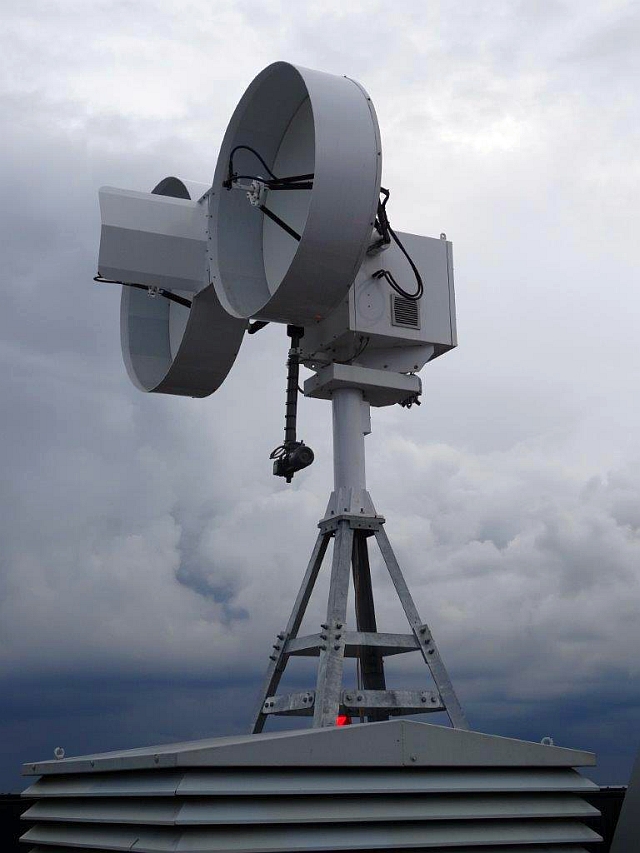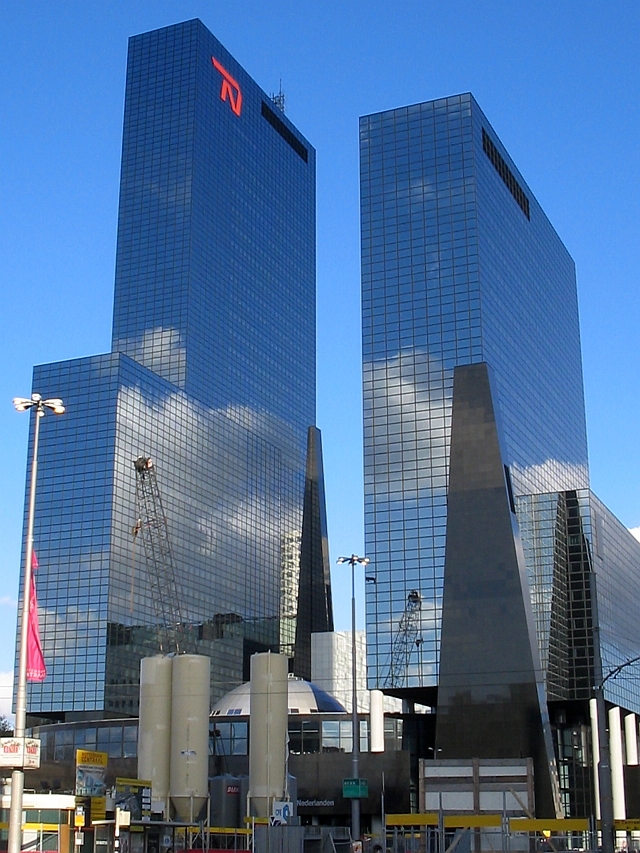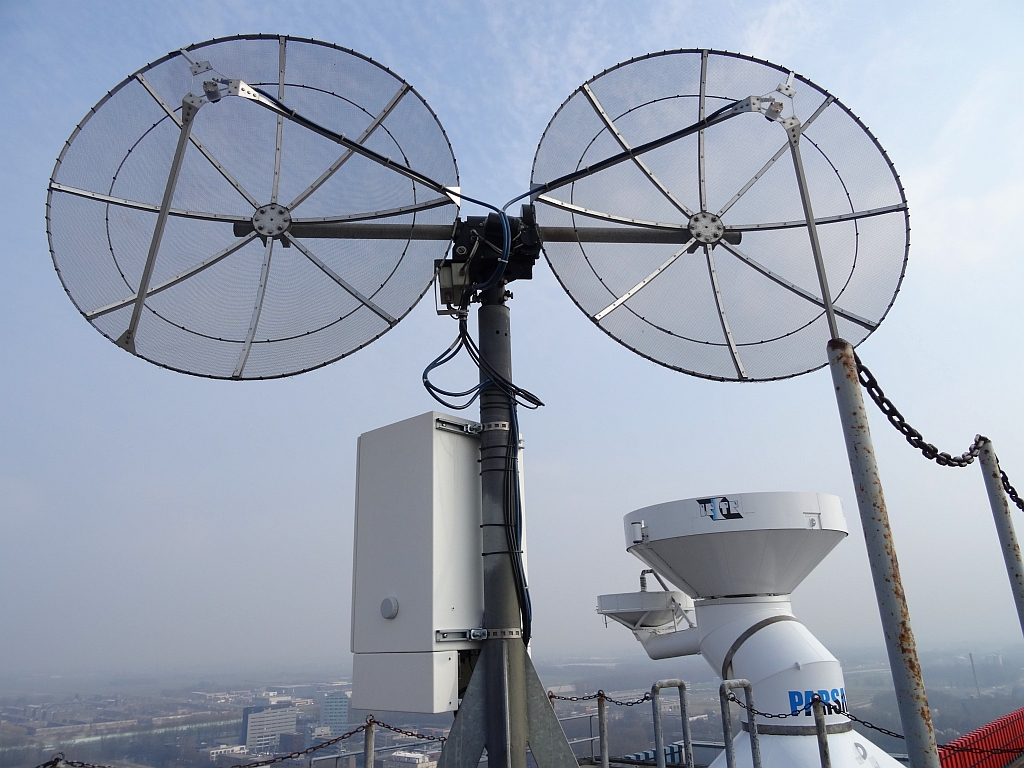Should you go by bus or by bicycle? Take your umbrella or your sunglasses? A newly installed rain radar in Rotterdam may help, as it will be able to accurately chart and predict local precipitation. Main aim of the project is to prevent local flooding and water damage.
A new type of rain radar was installed in Rotterdam on 22 September. The radar was installed on the roof of the Delftse Poort office building on the Weena. It will be used to accurately chart the rain patterns in Rotterdam.
As high as possible
Unlike the existing radars that measure precipitation throughout the whole of the Netherlands, the recently installed rain radar specialises in measuring local precipitation. For optimum observation of precipitation in the city, the rain radar must be placed as high as possible above the city’s skyline. The radar was therefore placed on the roof of the Delftse Poort office building on the Weena – one of the tallest buildings in the city centre. The radar was hoisted up via the window cleaner’s lift to a height of 150 metres and fixed to a special frame on the roof in order to withstand strong wind gusts. The radar’s range is 30 kilometres and therefore covers the entire city and the surrounding area, including the Europoort.
Test phase
The radar will now be extensively tested. The rotation of the radar antennas requires very precise control to enable accurate measuring. Processing the radar signals – many terabytes of data – places high demands on data communication for which special fibre-optic connections have been laid running up to the roof. Following the test phase, the radar will officially become operational in mid-October.
RainGain
The Rotterdam rain radar forms part of the wide-ranging European RainGain project, a transnational project aimed at improving the prediction of pluvial floods in our cities. RainGain develops and tests innovative tools and practices based on the use of high resolution radars in four pilot cities: Leuven, London, Paris, and Rotterdam.
More information on the use of rain radars is provided in this interview with Marie-Claire ten Veldhuis (CiTG):






